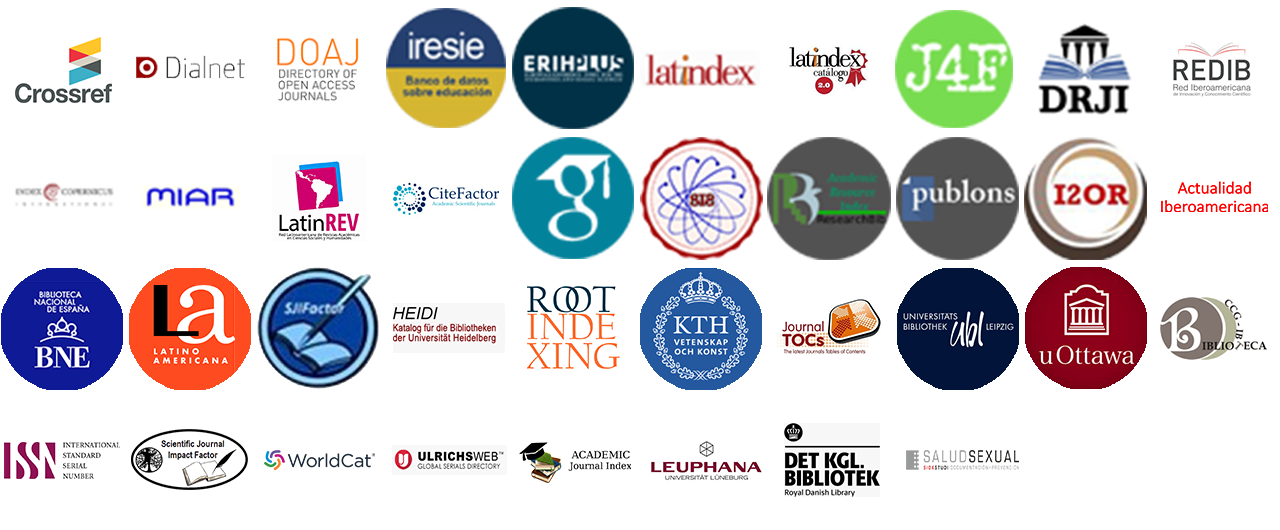Computer system the distribution of school uniforms. Case study: province of Granma, Cuba
DOI:
https://doi.org/10.36825/RITI.09.19.001Keywords:
Distribution, School Uniform, Computer System, SchedulingAbstract
The distribution of school uniforms in the province of Granma is a process that is carried out in the different study centers of the province. The current research paper is aimed at developing a computer system that allows the control of the distribution of school uniforms in the province of Granma. It proposes a new algorithm based on Q-Learning to optimize the scheduling of the process of making school uniforms in clothing workshops. The Q-Learning algorithm of Reinforced Learning is a solution to the problem of sequencing tasks with a Flow Shop environment in a real context. The development of the computer system is based on free and multiplatform technologies. The technologies are HTML 5, CSS 3, JavaScript, Bootstrap, jQuery and CodeIgniter. Extreme Programming was used as an agile methodology of development of software and the Model-View-Controller as an architectural pattern. A comparison of the results obtained from the execution of the algorithm with real data of the entity is performed. After analysis of the tests carried out, usefulness and reliability of the software developed are checked, which contributes to the improvement of the distribution of school uniforms in the province of Granma.
References
Rivera, D., Suconota, E. (2018). Las TIC en la gestión de los procesos educativos. Razón y Palabra, 22 (3_102), 481–509. Recuperado de: https://revistarazonypalabra.org/index.php/ryp/article/view/1278
Cardoza, M. E. (2015). Procedimiento para la adquisición de uniformes para el personal técnico administrativo del Ministerio de Educación. Recuperado de: https://www.transparencia.gob.sv
Aguirre Monge, N. C., García Cabrera, S. G. (2011). Sistema Informático de Registro Académico y Entrega de Paquetes Escolares para el Centro Escolar Católico Monseñor Esteban Alliet (Tesis de pregrado). Escuela de Ingeniería de Sistemas Informáticos. Facultad de Ingeniería y Arquitectura. Universidad de El Salvador.
Avelar García, R., Guerrero, E. M., Reyes de Marquez, C. M. (2015). Sistema Informático con Interfaz Web para el Registro Académico, Recurso Humano, Control Bibliotecario y Bono Escolar, del Centro Escolar Canton El Espino Debajo de Zacatecoluca, Departamento de La Paz (Tesis de pregrado). Departamento de Informática. Facultad Multidisciplinaria Paracentral. Universidad de El Salvador.
LaGrone, B. (2013). HTML5 and CSS3 Responsive Web Design Cookbook. San Francisco, California, USA: Packt Publishing
Gauchat, J. D. (2012). El gran libro de HTML5, CSS3 y JavaScript (3era. Ed.). México: Alfaomega.
Haverbeke, M. (2018). ELOQUENT JAVASCRIPT. A Modern Introduction to Programming (3era. Ed.). Recuperado de: http://www.eloquentjavascript.net
Cabezas, L. (2010). Manual imprescindible de PHP. España: Gráficas Hermanos Gómez, S.L.L.
Bootstrap, T. (2019). Build fast, responsive sites with Bootstrap. Recuperado de: http://www.getbootstrap.com/
Mestras, J. P. (2011). Aplicaciones Web/Sistemas Web. Bootstrap 3.0. Recuperado de: https://www.lawebdelprogramador.com/pdf/14128-Bootstrap-3.0-Aplicaciones-Web-Sistemas-Web.html
Penadés, C. (2006). Metodologías ágiles para el desarrollo de software: eXtreme Programming (XP). Recuperado de: http://www.cyta.com.ar/ta0502/v5n2a1.htm
Buschmann, F., Meunier, R., Rohnert, H., Sornmerlad, P., Stal, M. (1996). Pattern-Oriented Software Architecture: A System of Patterns. USA: John Wiley & Sons Ltd.
Matía, J. (2007). Optimización de la secuenciación de tareas en taller mediante algoritmos genéticos (Tesis de Maestría). Universidad Pontificia Comillas.
Sierra, M. R. (2009). Mejora de algoritmo de búsqueda heurística mediante poda por dominancia. Aplicación a problemas de scheduling (Tesis Doctoral). Universidad de Oviedo, Oviedo.
Tarancón, S. (2009). Supercomputing quality scheduling a soft-computing approach (Proyecto Fin de Máster). Universidad Complutense de Madrid, Madrid.
Sutton, R. S., Barto, A. G. (1998). Reinforcement Learning: An Introduction. Cambridge, MA: MIT Press.
Watkins, C. (1989). Learning from delayed rewards, in Psychology Department (PhD Thesis). University of Cambridge.
Jaakkola, T., Jordan, M. I., Singh, S. P. (1994). On the convergence of stochastic iterative dynamic programming algorithms. Neural Computation. 6 (6), 1185-1201. doi: https://doi.org/10.1162/neco.1994.6.6.1185
Watkins, C., Dayan, P. (1992). Q-learning. Machine Learning, 8, 279-292. doi: https://doi.org/10.1007/BF00992698
Lin, L.-J. (1992). Self-improving reactive agents based on reinforcement learning, planning and teaching. Machine Learning, 8, 293-321. doi: https://doi.org/10.1007/BF00992699
Published
How to Cite
Issue
Section
License
Copyright (c) 2021 Revista de Investigación en Tecnologías de la Información

This work is licensed under a Creative Commons Attribution-NonCommercial-NoDerivatives 4.0 International License.
Esta revista proporciona un acceso abierto a su contenido, basado en el principio de que ofrecer al público un acceso libre a las investigaciones ayuda a un mayor intercambio global del conocimiento.
El texto publicado en la Revista de Investigación en Tecnologías de la Información (RITI) se distribuye bajo la licencia Creative Commons (CC BY-NC
 ), que permite a terceros utilizar lo publicado citando a los autores del trabajo y a RITI, pero sin hacer uso del material con propósitos comerciales.
), que permite a terceros utilizar lo publicado citando a los autores del trabajo y a RITI, pero sin hacer uso del material con propósitos comerciales.



